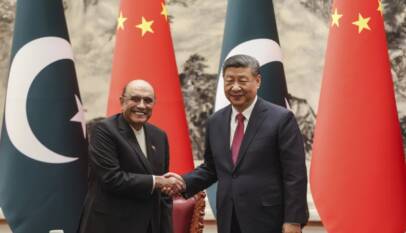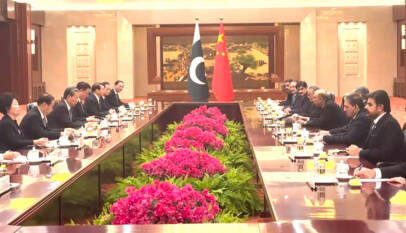CPEC proving to be a harbinger of economic prosperity
Shabir Ahmad Khan, Director of Area Study Centre (Russia, China, and Central Asia) at the University of Peshawar has highlighted how BRI’s flagship project, CPEC has helped Pakistan break the energy and transport infrastructure bottlenecks and injected strong impetus into its economic development. He also debunked myths surrounding BRI that it’s causing carbon emissions in partner countries like Pakistan. He also highlighted how unlike Western loans, CPEC loans are very low in interest rate.
ISLAMABAD: As a flagship project of the Belt and Road Initiative (BRI), the China-Pakistan Economic Corridor (CPEC) has helped Pakistan to break the energy and transport infrastructure bottlenecks and injected strong impetus into its economic development, a scholar said.
The BRI is a manifestation of China’s idea of shared prosperity, and a lot of demand-driven projects have been executed in countries along the BRI routes, including Pakistan, Shabir Ahmad Khan, director of Area Study Centre (Russia, China and Central Asia) in the University of Peshawar, told Xinhua in an interview.
Pakistan once faced a serious problem on load shedding, but the energy crisis has been overcome after China helped Pakistan to build a number of coal-fired, wind and photovoltaic power stations under the CPEC.
Opposing an unwarranted smear by an Indian think-tank that the BRI only exports carbon emissions to countries along the BRI routes, Khan said: “Making a false propaganda against the BRI that it polluted environment in member countries like Pakistan through power plants, rather than appreciating it for overcoming energy crisis, is a shameful act.”
He noted the coal-fired power plants under the CPEC, including those at Sahiwal and Port Qasim, are advanced and eco-friendly, and use supercritical technology and install additional facilities at the plants to keep the emissions well under the local and world standards.
“Pakistan’s contribution to the global greenhouse gas emissions is less than 1 percent, so it is clear that emissions are not the major problem of Pakistan, but unemployment, poor infrastructure, unskilled labour, poverty, low agriculture production, and underdeveloped industrialization process are, and the CPEC is the answer to all these woes,” Khan said.
He added that as multiple renewable energy projects such as Karot and Suki Kinari hydropower stations are under construction, the corridor will also play an important role in Pakistan’s transformation towards clean and green energy.
Terming the CPEC as the lifeline of the Pakistani economy, he said that it has also effectively addressed the poor infrastructure problem of Pakistan by laying a network of roads including the Karakoram Highway Phase Two and the Sukkur-Multan Motorway, which has shortened the distance for commuters and traders.
Khan said that the CPEC has created 75,000 jobs in Pakistan, and there will be a lot more as the corridor has entered a new phase of high-quality development, focusing on industrial, agricultural and socio-economic cooperation.
“Chinese have worked so hard to achieve professional excellence, and through the CPEC, they have trained Pakistani labourers and engineers and transferred their skills to them, which enabled them to achieve financial independence,” he added.
Refuting the false accusation of the CPEC being a “debt trap” for Pakistan, he said the Chinese loans only account for a small amount of the country’s total external debt while the remaining majority comes from Western borrowers.
Khan said that, unlike Western loans, the CPEC loans are very low in interest rate, adding that the facts indicate that it is the Western debt that is a trap in which Pakistan has been caught for years while the CPEC has the potential to emancipate the country from it.
The BRI is leading its participants to enter into a new era of development just like what Pakistan has benefited greatly from the CPEC, he said.
President Zardari, Xi Jinping vow deeper cooperation in high-level talks in Beijing
China’s President Xi Jinping held talks with visiting Pakistani counterpart Asif Ali…










